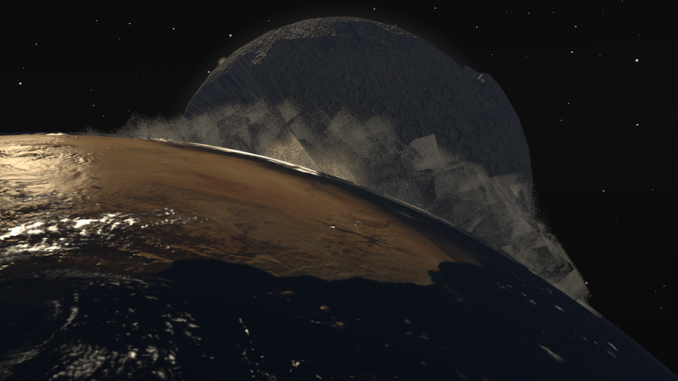
Did you know that there was a global climatic cataclysm in the sixth century?
Between the years 535 and 536 the sun was dark for over 18 months and a series of major global climatic events took place that had catastrophic consequences – all of this is according to historian and church leader, John of Ephesus, a sixth century historian and church leader.
Ancient-origins.net reports:

BYPASS THE CENSORS
Sign up to get unfiltered news delivered straight to your inbox.
You can unsubscribe any time. By subscribing you agree to our Terms of Use
John of Ephesus is not the only one that mentions this event. Procopius lived between 500 and 565 AD and he was a late antiquities scholar and one of the main historians of the 6th century. He also refers to the strange behaviour of the sun and believed that it was a bad sign and the beginning of other events.
… during this year a most dread portent took place. For the sun gave forth its light without brightness…and it seemed exceedingly like the sun in eclipse, for the beams it shed were not clear.,
History of the Wars: The Vandalic War.And we have yet another reference from the sixth century writer, Zacharias of Mytilene, who authored a chronicle that contains a section referring to the ‘Dark Sun’ for the period of 535/536 AD.
The sun began to be darkened by day and the moon by night, while the ocean was tumultuous with spray from the 24th of March in this year till the 24th of June in the following year… And, as the winter was a severe one, so much so that from the large and unwonted quantity of snow the birds perished… there was distress… among men… from the evil things,
Zacharias of Mytilene (Chronicle, 9.19, 10.1)These three extracts are just a representative sample of numerous accounts from all over the world, written in the same period of time. In all cases, the sun was described as getting dimmer and losing its light. Many also described it as having a bluish colour. The effects were also observed with the moon – it wasn’t as bright anymore. The reduction of the light resulted in the reduction of heat on the planet; no rain and a very long winter resulted in crop failures and for birds and other wildlife to perish, as Zacharias of Mytilene writes. Famine and plagues struck many areas and there were a huge number of deaths.
In China and Japan, the event was also recorded in great detail. Massive droughts and thousands of deaths. The water wasn’t enough for the people and the land. Hundreds of thousands of square miles became infertile. In the Beishi chronicles, the official history of the Northern Dynasties, mentions that in 536, in the province of Xi’an, 80% of the population died and the survivors ate corpses to survive.
The catastrophic event struck Korea, the Americas, Europe, Africa, and Australia. While written records do not exist for all countries, archaeological and geological data revealed evidence of the climatic changes. Studies done on the trunks of trees, for example, showed that 536 AD had been the coldest in 1,500 years.
The important question in all of this is, why did it happen? While there are no definite answers, one theory that has been put forward is that there was a large asteroid or comet impact which landed in the sea (if it hit land there would be evidence of a crater). Geologist Dallas Abbott is one proponent of this view and bases his view on evidence that he found studying ice cores from Greenland. However, this wouldn’t explain the dim light of the sun, and no tsunamis have been recorded for this period, which would have occurred if an asteroid landed in the ocean.
Another theory that has been put forward is a gigantic volcanic eruption – the dust thrown up into the atmosphere could have caused the dimming of the light. One candidate is Krakatoa, located between the islands of Java and Sumatra in Indonesia. Indeed, the Book of the Ancient Kings or Pustaka Raja Purwa, written in 1869, describes an ancient volcano.
There was a furious shaking of the earth, total darkness, thunder and lighting.
… Then came forth a furious gale together with torrential rain and a deadly storm darkened the entire world.
… When the waters subsided it could be seen that the island of Java had been split into two, this creating the island of Sumatra.However, this manuscript refers to the year 416 AD and not 535 AD. Nevertheless, the fact that it was written in the 19th century could account for inaccuracies in the time reference.
Whether or not the answer will ever be found is unknown. It is unclear whether scientists are even continuing to pursue research on this event. One thing that is quite peculiar about this global cataclysm is that it is a very little known event. Why is it that this climatic event is not taught in schools? Why isn’t there a plethora of research examining it? Perhaps it is because it reminds us of our fragility as human beings and the fact that no matter how powerful and ‘advanced’ mankind becomes, we are still at the mercy of nature.

